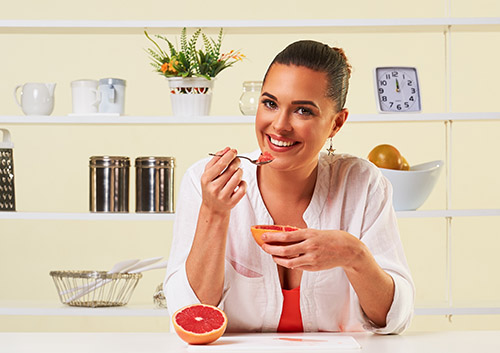Four Good Reasons to Visit Your Periodontist
July 24th, 2024

For most of our oral health care needs, our family dentist is the perfect person to see. Examinations, cleanings, treating cavities, restorations such as fillings and crowns, preventive care—you’ve probably seen your regular dentist for many of these procedures.
And when it comes to treating mild gum disease, known as gingivitis, your dentist is a good person to call. If you’ve noticed bleeding gums, or gum pain when brushing, or redness, or recurring bad breath, you might have gingivitis. Often, with more attention to brushing and flossing and a professional cleaning, your gums will be healthy again in no time.
Gingivitis, though, is not the only type of gum disease. Periodontitis is the medical term for advanced gum disease, and this type of gum disease is progressive, becoming more serious over time. Untreated periodontitis can lead to infection, inflammation, and loss of tooth and bone.
If you have serious gum disease, it’s time to visit Doctors Bauer, Lawrenz, and Stark. Periodontists are specialists with years of advanced training and experience in the diagnosis and treatment of the structures supporting your teeth, including the gums, periodontal ligaments, and surrounding bone.
Here are four very good reasons to give our Champlin, MN periodontal office a call:
- Receding gums
If you’ve noticed that you’re seeing more tooth than you’re used to, this could be a sign of receding gums. Besides affecting the appearance of your smile, gum recession can impact your dental health.
When gums pull away from the teeth, the top of the roots, which were once protected by healthy gum tissue, are now exposed to bacteria and plaque. Because our roots are covered by cementum, which is softer than enamel, they are more vulnerable to decay, and decay progresses more quickly than it does in the tooth crown.
- Infected/inflamed periodontal pockets
When the gums pull away from the teeth, a pocket forms between tooth and gum. Bacteria and plaque collect here, where your toothbrush can’t reach, leaving you at risk for abscess and infection.
A periodontal abscess is a pocket filled with pus which forms between tooth and gum. Beyond the swelling and pain caused by an abscess, infection can spread, damaging connective tissue and bone in the jaw, and potentially spreading to other parts of the body.
- Loose teeth
A loose baby tooth is a welcome surprise for a child—a loose adult tooth? Not so much! Loose permanent teeth can be caused by several conditions, including an injury, osteoporosis, and pregnancy. But the one of the most common causes of loose teeth in adults is periodontitis.
Periodontal infection and inflammation can damage the ligaments and bone that support the teeth and hold them firmly in place. This damage results in loose teeth and can lead to tooth loss if left untreated.
- Your dentist’s recommendation
If your dentist has suggested a periodontal consultation at Champlin Family Dental, please follow this advice!
What can a periodontist do for you?
- Receding gums can be treated with gum grafts when the recession is extensive, both to protect the roots of your teeth and to enhance the appearance of your smile.
- To prevent the formation of deep periodontal pockets, Doctors Bauer, Lawrenz, and Stark might suggest scaling and root planing procedures, non-surgical deep cleaning treatments which encourage gum tissue to reattach to smooth, clean teeth. If necessary, pockets can be cleaned and gum tissue re-secured around the teeth with pocket reduction surgery.
- When the bone structure has been damaged, bone and tissue grafts can regenerate and restore structural integrity.
Periodontitis is progressive, and, as time goes by, infection and inflammation will continue to do damage to the gums, ligaments, and bone that support your teeth. Your Champlin, MN periodontal team is an invaluable resource for treating periodontitis and for preventing its recurrence. So if you suffer from gum disease, let’s finish with one more reason to see Doctors Bauer, Lawrenz, and Stark: working together proactively for a lifetime of attractive, healthy smiles.




 Website Powered by Sesame 24-7™
Website Powered by Sesame 24-7™